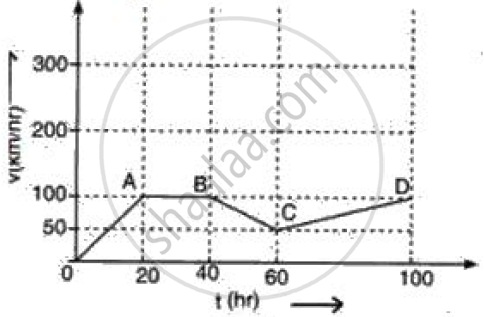Advertisements
Advertisements
Question
A body is moving vertically upwards. Its velocity changes at a constant rate from 50 m s-1 to 20 m s-1 in 3 s. What is its acceleration?
Solution
Here, final velocity = 20 m/s
Initial velocity = 50 m/s
Time taken = 3 s
Acceleration = `("Final Velocity - Initial Velocity")/"time"`
= `(20 - 50)/3` m/s-2
= -10 m/s-2
Negative sign here indicates that the velocity decreases with time, so retardation is -10 m/s-2.
APPEARS IN
RELATED QUESTIONS
Distinguish between acceleration and retardation.
A train moving with a velocity of 20 m s-1 is brought to rest by applying brakes in 5 s. Calculate the retardation.
A ball is rolling from A to D on a flat and smooth surface. Its speed is 2 cm/s. On reaching B, it was pushed continuously up to C. On reaching D from C, its speed had become 4 cm/s. It took 2 seconds for it to go from B to C. What is the acceleration of the ball as it goes from B to C?

A body falls towards the earth. Does it have positive or negative acceleration?
The distance covered by a body is directly proportional to the square of the time elapsed. What can you say about its acceleration?
A body has an acceleration of -3.5 ms-2. What is its retardation?
A car is moving with a speed of 50 km/h. One second later, its speed is 55 km/h. What is its acceleration?
A car accelerates to a velocity of 30 m/s in 10 s and then decelerates for 20 s so that it stops. Draw a velocity-time graph to represent the motion and find:
The Deceleration.
Figure represents graphically the velocity of a car moving along a straight road over a period of 100 hours.
Calculate the acceleration along AB and the retardation along BC.
From the given v-t graph it can be inferred that an object is

